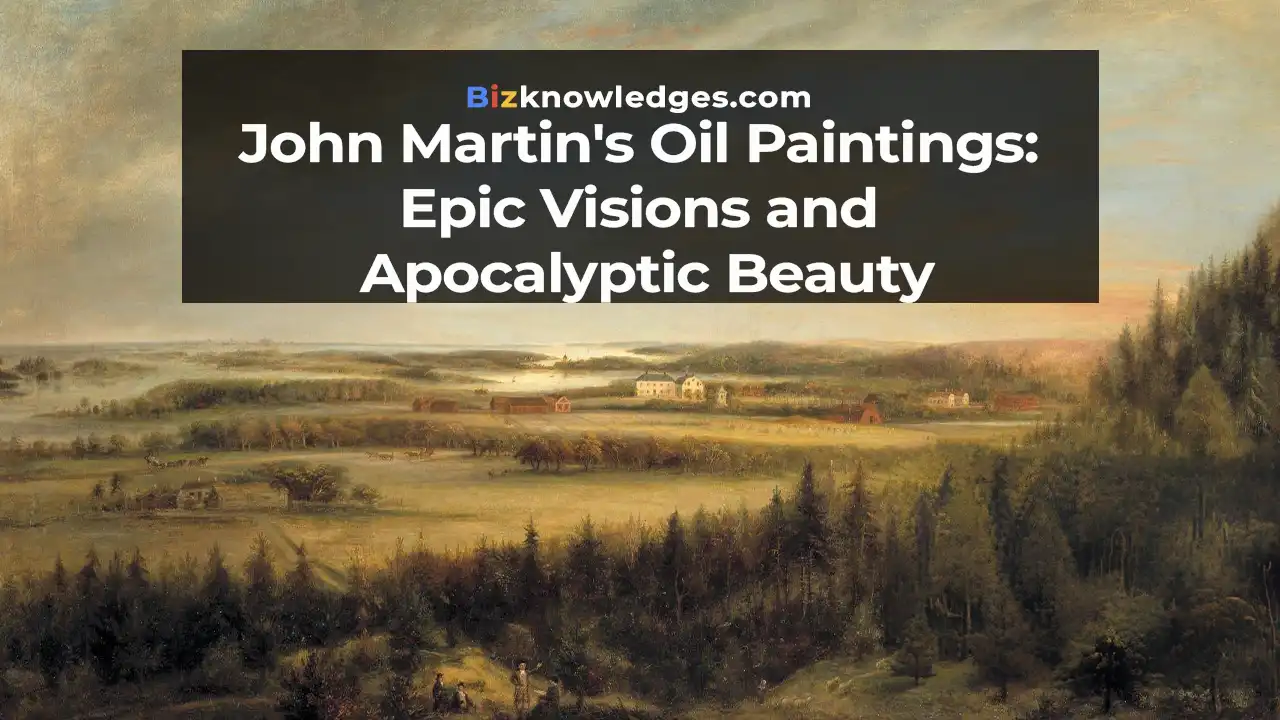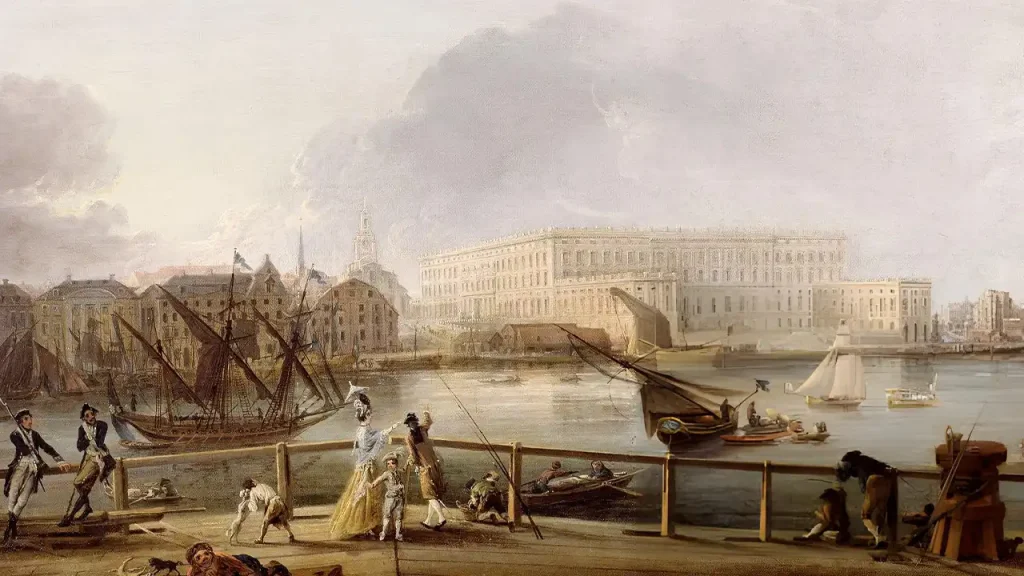John Martin’s Oil Paintings: Epic Visions and Apocalyptic Beauty

John Martin, a 19th-century British artist, is best known for his grandiose and dramatic oil paintings that vividly depict biblical scenes, historical events, and apocalyptic visions. His works are characterized by their large scale, intricate detail, and the profound sense of awe they evoke. Martin’s paintings often blend the sublime and the terrifying, capturing the tumultuous forces of nature and the divine. This article delves into the world of John Martin’s oil paintings, exploring their themes, techniques, and lasting impact on the art world.
The Apocalyptic Visions of John Martin
John Martin’s oil paintings are renowned for their apocalyptic themes, often depicting cataclysmic events that highlight the smallness of humanity in the face of divine wrath and natural disasters. These works are typically set against vast, dramatic landscapes filled with towering mountains, tempestuous skies, and roaring seas. Martin’s ability to convey the scale and intensity of these scenes is one of the reasons his works have remained so captivating.
One of Martin’s most famous paintings, The Great Day of His Wrath, is a prime example of his apocalyptic vision. In this piece, Martin portrays the end of the world as described in the Book of Revelation, with the earth splitting apart and the heavens collapsing. The painting’s dynamic composition and dramatic lighting create a sense of chaos and destruction, drawing the viewer into the terrifying moment of divine judgment. This work, like many of Martin’s paintings, reflects his fascination with the power of the natural world and the inevitable destruction that it can bring.
The Fall of Babylon: A Masterpiece of Historical Painting
Among John Martin’s most celebrated works is The Fall of Babylon, a painting that exemplifies his ability to merge historical narrative with his signature dramatic style. Completed in 1831, this painting depicts the biblical story of the destruction of Babylon, a once-great city brought low by divine retribution. Martin’s depiction of the scene is nothing short of epic, with the city in flames, its mighty walls crumbling, and the terrified populace fleeing in panic.

The Fall of Babylon showcases Martin’s mastery of composition and detail. The painting is filled with minute elements that together create a sense of overwhelming chaos and destruction. The use of light and shadow enhances the drama of the scene, highlighting the stark contrast between the bright flames consuming the city and the dark, foreboding sky above. Martin’s depiction of this event is not just a historical illustration but a powerful commentary on the fragility of human power in the face of divine will.
The painting’s scale and ambition reflect Martin’s broader approach to art, where he sought to engage the viewer emotionally and intellectually. By focusing on monumental events and using a style that emphasized the vastness and power of nature, Martin created works that were not just visually striking but also deeply thought-provoking.
Martin’s Unique Artistic Techniques
John Martin’s oil paintings are distinguished by several key techniques that set his work apart from his contemporaries. One of the most notable aspects of his style is his use of scale. Martin often depicted his scenes on a vast scale, both in terms of the physical size of the paintings and the subjects they portrayed. This grand scale allowed him to convey the immensity of the events he depicted, whether they were biblical apocalypses or ancient battles.
Another defining feature of Martin’s work is his meticulous attention to detail. His paintings are filled with intricate elements that contribute to the overall narrative. From the tiny figures of people in the foreground to the elaborate architecture and landscapes in the background, Martin’s works reward close examination, revealing new details with each viewing. This level of detail, combined with his dramatic compositions, gives his paintings a sense of depth and realism that enhances their impact.
Martin was also a master of light and shadow, using these elements to heighten the drama of his scenes. His use of chiaroscuro— the contrast between light and dark—adds to the emotional intensity of his works, creating a sense of impending doom or divine revelation. This technique is particularly evident in works like The Fall of Babylon, where the interplay of light and shadow underscores the chaos and destruction of the scene.
The Legacy of John Martin’s Oil Paintings
John Martin’s influence extends far beyond his own time, with his oil paintings continuing to inspire artists, filmmakers, and audiences today. His work has been compared to modern cinematic techniques, particularly in how he used composition and lighting to create dramatic, almost theatrical effects. This connection to the film is perhaps most evident in how Martin’s apocalyptic scenes have inspired the visual language of disaster movies, where the smallness of humanity is often emphasized against vast, destructive forces.
Martin’s paintings also had a significant impact on the Romantic movement, aligning with its emphasis on the sublime—the idea of awe-inspiring beauty mixed with terror. His works capture this tension perfectly, portraying both the beauty and the terrifying power of nature and the divine. This focus on the sublime in art was influential in shaping the direction of Romanticism and continues to resonate in contemporary artistic expressions.
Moreover, John Martin’s oil paintings serve as historical documents, capturing the 19th-century fascination with biblical and historical themes. His works reflect the era’s concerns with morality, divine justice, and the consequences of human hubris. In this way, Martin’s paintings are not just artistic achievements but also cultural artifacts that offer insight into the values and anxieties of his time.
Conclusion
John Martin’s oil paintings stand as monumental achievements in the history of art. His ability to combine grand themes with meticulous detail and his mastery of dramatic composition make his works timeless examples of the power of visual storytelling. Whether depicting apocalyptic visions or historical events like The Fall of Babylon, Martin’s paintings continue to captivate and inspire, reminding us of the enduring power of art to explore the most profound aspects of the human experience.
As we look at Martin’s works today, we are not just witnessing scenes from history or scripture; we are engaging with a vision of the world that challenges us to think about the forces that shape our lives—both natural and divine. Through his oil paintings, John Martin has left an indelible mark on the world of art, one that continues to resonate with audiences centuries after they were first created.
